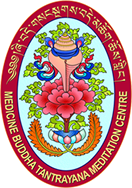Fundamental Dharma Teachings
In Buddhism dharma means "cosmic law and order",but is also applied to the teachings of the Buddha. In Buddhist philosophy, dhamma/dharma is also the term for "phenomena". In your study of the dharma, you will encounter numerous lists, which the Buddha created to make his teachings accessible and memorable.
The teacher of the Buddhist doctrine was Gautama Buddha who was born in the Shakya clan in India. The story of Buddha's life is told in three parts: an initial generation of an altruistic intention to become enlightened, in the middle his accumulation of the collections of merit and wisdom, and in the end his attaining enlightenment and turning the wheel of doctrine. The reason why his story is presented in this manner is that in Buddhism there is no teacher who was already enlightened from the beginning of time; instead, a person must become newly enlightened.
Because there are four schools of tenets within Buddhism, there are many different explanations of how to generate an altruistic intention to become enlightened, how the collections of merit and wisdom are accumulated, and how to become enlightened. From a general point of view, however, Shakyamuni first developed an aspiration to attain Buddhahood in order to bring about the welfare of sentient beings - their welfare being his primary intent, and his own enlightenment being the means to bring it about. Then, in the Middle, he accumulated the collections of merit and wisdom for three periods of countless eons, at the end of which he become fully and thoroughly enlightened. Since Shakyamuni's life story is widely available in buddhist literature, it is not necessary to repeat it here.
132 Kars Street, Frankston South VIC 3199
Tel: 03-9766-0768
